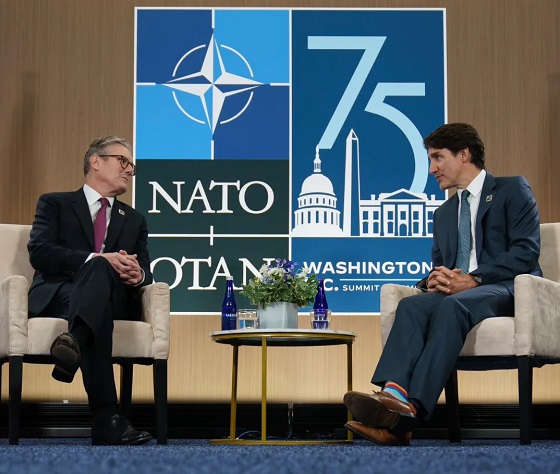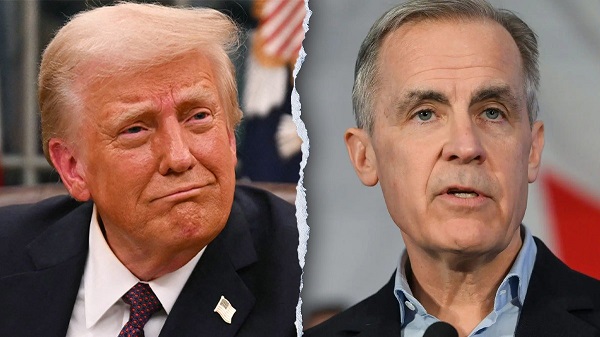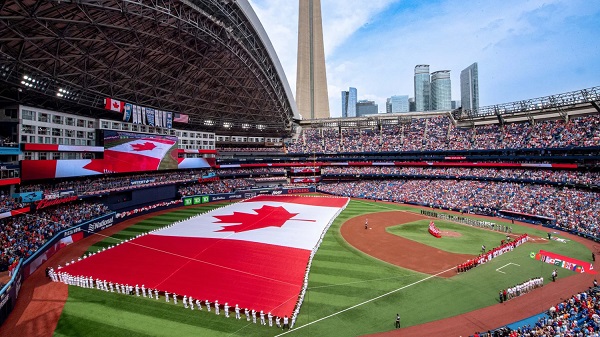Frontier Centre for Public Policy
Canada’s Democracy Is Running On Fumes

From the Frontier Centre for Public Policy
By Gerry Bowler
Prime ministerial control, weak Parliament and a dependent press have left voters with little more than a ritual trip to the ballot box
Canadians take comfort in U.S. dysfunction, but the foundations of our own democracy are already showing serious strain
Canada isn’t the strong democracy we like to believe. Behind the peaceful elections and parliamentary rituals lies a system where power is concentrated in the hands of one person: the prime minister.
Since Confederation, Canada has avoided coups and revolutions. Governments have changed hands through orderly elections, a record many countries envy. On the surface, it looks like a stable democracy.
But look closer, and the cracks show.
The 1982 Constitution enshrined a Charter of Rights and Freedoms promising equality for all, and then immediately allowed governments to override those rights with the “notwithstanding clause,” which lets legislatures pass laws even if they conflict with the Charter.
The Emergencies Act, used for the first time during the 2022 trucker protests, gives Ottawa extraordinary powers to suspend freedoms and compel action. Its use included freezing bank accounts without court orders and compelling tow truck operators to provide their services to remove the vehicles, measures that left many Canadians unsettled about how quickly their rights can be curbed.
Parliamentary practice has also made the prime minister one of the most powerful elected leaders in the world. He decides who can run under his party’s banner, when MPs may speak and who sits in cabinet. He appoints the heads of federal agencies, judges, ambassadors and senators. In theory, these powers rest with the Crown. In practice, it is the prime minister who even chooses the governor general. Unlike Britain, where leaders must contend with internal party democracy, Canadian prime ministers enforce tight discipline, leaving backbench MPs with little influence.
This isn’t just theory. Pierre Trudeau’s iron grip on his caucus, Stephen Harper’s strict message control and Justin Trudeau’s demands for near-total loyalty all show how party discipline can stifle independent voices in Parliament.
When opposition parties pose a threat, a prime minister can simply prorogue Parliament, temporarily shutting it down without dissolving it, and avoiding debate. Jean Chrétien, Harper and Trudeau have all used this tactic when pressure mounted. After an election, the first sitting can be delayed for nearly a year. Even when Parliament does sit, question period, once meant to hold governments accountable, has become little more than a trading of insults. Canadians who tune in often come away with the impression of theatre, not oversight.
Parliament’s supremacy has been further eroded by section 52(1) of the Constitution, which gives the Supreme Court power to strike down laws passed by elected representatives and create new rights and obligations in their place. Courts have struck down laws on abortion, safe-injection sites and mandatory minimum sentences, reshaping policy without a vote in the House of Commons.
Meanwhile, the press, long considered democracy’s watchdog, now relies heavily on government subsidies such as the federal media bailout program. Sold as a lifeline to preserve journalism, it has raised unavoidable questions about independence. Critics argue that when newsrooms depend on Ottawa for survival, it blunts their willingness to challenge the same government that funds them. In a country where a strong, adversarial press is essential, the appearance of influence is almost as damaging as direct control.
All of this has reduced Canadian democracy to little more than a ritual trip to the ballot box every four or five years. With power so centralized, many voters understandably wonder whether their participation matters. No surprise, then, that a third of Canadians don’t bother to vote, with even lower turnout in provincial and municipal elections.
Canadians often look south at the polarization and chaos in American politics and congratulate ourselves for avoiding the same fate. But that smugness is dangerous. The U.S. reminds us how quickly democratic institutions can fray when power is abused and trust collapses. Canada is not immune.
The warning signs are here. Keep ignoring them, and our democracy will collapse: not with a bang but with a whimper.
Gerry Bowler is a Canadian historian and a senior fellow of the Frontier Centre for Public Policy.
Education
Classroom Size Isn’t The Real Issue
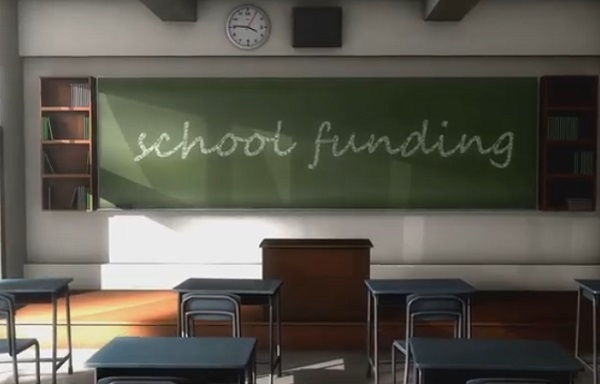
From the Frontier Centre for Public Policy
The real challenge is managing classrooms with wide-ranging student needs, from special education to language barriers
Teachers’ unions have long pushed for smaller class sizes, but the real challenge in schools isn’t how many students are in the room—it’s how complex those classrooms have become. A class with a high proportion of special needs students, a wide range of academic levels or several students learning English as a second language can be far more difficult to teach than a larger class where students are functioning at a similar level.
Earlier this year, for example, the Elementary Teachers’ Federation of Ontario announced that smaller class sizes would be its top bargaining priority in this fall’s negotiations.
It’s not hard to see why unions want smaller classes. Teaching fewer students is generally easier than teaching more students, which reduces the workload of teachers. In addition, smaller classes require hiring more teachers, and this amounts to a significant financial gain for teachers’ unions. Each teacher pays union dues as part of membership.
However, there are good reasons to question the emphasis on class size. To begin with, reducing class size is prohibitively expensive. Teacher salaries make up the largest percentage of education spending, and hiring more teachers will significantly increase the amount of money spent on salaries.
Now, this money could be well spent if it led to a dramatic increase in student learning. But it likely wouldn’t. That’s because while research shows that smaller class sizes have a moderately beneficial impact on the academic performance of early years students, there is little evidence of a similar benefit for older students. Plus, to get a significant academic benefit, class sizes need to be reduced to 17 students or fewer, and this is simply not financially feasible.
In addition, reducing class sizes means spending more money on teacher compensation (including salaries, pensions and benefits). Also, it leads to a decline in average teacher experience and qualifications, particularly during teacher shortages.
As a case in point, when the state of California implemented a K-3 class-size reduction program in 1996, inexperienced or uncertified teachers were hired to fill many of the new teaching positions. In the end, California spent a large amount of money for little measurable improvement in academic performance. Ontario, or any other province, would risk repeating California’s costly experience.
Besides, anyone with a reasonable amount of teaching experience knows that classroom complexity is a much more important issue than class size. Smaller classes with a high percentage of special needs students are considerably more difficult to teach than larger classes where students all function at a similar academic level.
The good news is that some teachers’ unions have shifted their focus from class size to classroom complexity. For example, during the recent labour dispute between the Saskatchewan Teachers’ Federation (STF) and the Saskatchewan government, the STF demanded that a classroom complexity article be included in the provincial collective agreement. After the dispute went to binding arbitration, the arbitrator agreed with the STF’s request.
Consequently, Saskatchewan’s new collective agreement states, among other things, that schools with 150 or more students will receive an additional full-time teacher who can provide extra support to students with complex needs. This means that an extra 500 teachers will be hired across Saskatchewan.
While this is obviously a significant expenditure, it is considerably more affordable than arbitrarily reducing class sizes across the province. By making classroom complexity its primary focus, the STF has taken an important first step because the issue of classroom complexity isn’t going away.
Obviously, Saskatchewan’s new collective agreement is far from a panacea, because there is no guarantee that principals will make the most efficient use of these additional teachers.
Nevertheless, there are potential benefits that could come from this new collective agreement. By getting classroom complexity into the collective agreement, the STF has ensured that this issue will be on the table for the next round of bargaining. This could lead to policy changes that go beyond hiring a few additional teachers.
Specifically, it might be time to re-examine the wholesale adoption of placing most students, including those with special needs, in regular classrooms, since this policy is largely driving the increase in diverse student needs. While every child has the right to an education, there’s no need for this education to look the same for everyone. Although most students benefit from being part of regular academic classes, some students would learn better in a different setting that considers their individual needs.
Teachers across Canada should be grateful that the STF has taken a step in the right direction by moving beyond the simplistic demand for smaller class sizes by focusing instead on the more important issue of diverse student needs.
Michael Zwaagstra is a senior fellow with the Frontier Centre for Public Policy.
Alberta
Alberta Is Where Canadians Go When They Want To Build A Better Life
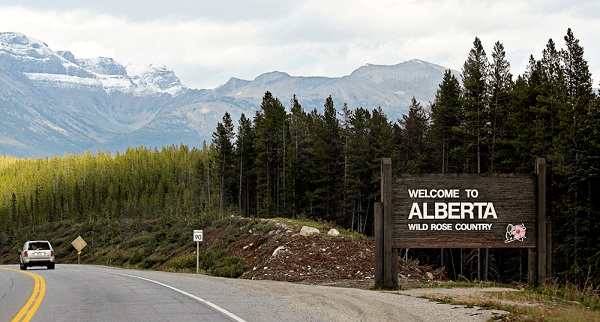
From the Frontier Centre for Public Policy
One in three Canadians chooses Alberta to start over. But to stay Canada’s top destination, it must fight Ottawa’s barriers and complacency
No province has captured the Canadian imagination quite like Alberta—and not because of oil.
One in three Canadians leaving their provinces in the past five years headed to Alberta. They were escaping stagnant wages, high housing costs and suffocating bureaucracy. They came for freedom and opportunity, and Alberta delivered. Its edge is cultural: it rewards enterprise instead of strangling it.
The question now is whether Albertans can keep that edge before Ottawa and complacency close in.
Prosperity, like liberty, vanishes the moment people stop fighting for it. If Alberta wants to remain Canada’s economic engine, it must continue to move forward, tearing down old barriers while fending off the new ones that Ottawa and other provinces are always erecting.
The cost of standing still is staggering.
Economists say provincial trade barriers (rules that prevent goods, services, and workers from moving freely) cost the Canadian economy up to $130 billion a year. For Alberta, even a 10 per cent reduction would be worth $7.3 billion a year.
When Quebec killed the Energy East pipeline that would have carried Alberta crude to eastern refineries, Alberta lost the chance to export oil worth as much as $15 billion annually.
That’s not theory. That’s lost paycheques, lost tax revenue and public services that never materialized.
Alberta has always been more willing than others to break free from the barriers that hold back growth. Liquor sales were privatized decades ago, as were property registries. The New West Partnership with Saskatchewan, Manitoba and B.C. opened labour mobility and procurement, though it has since stalled. Alberta doesn’t impose cultural tests and it doesn’t levy a provincial sales tax. Families arrive because life here is easier. They can work, start a business, raise kids or simply breathe without bureaucrats looking over their shoulder.
But cracks remain. Liquor shelves may be free, but the Alberta Gaming, Liquor and Cannabis Commission monopoly clogs the warehouse. Professional associations in law, teaching and health care are slow to recognize credentials and drown their members in red tape.
Procurement often tilts local, because, apparently, free markets stop at the city line. And like every other province, Alberta still bows to Ottawa’s anticompetition telecom rules, the dairy and poultry cartel and the banking oligopoly, systems that consistently benefit Quebec farmers and Bay Street lenders at Alberta’s expense.
And as if the old cracks weren’t enough, new barriers are appearing. One of the worst is protectionism. Canadians love mocking Donald Trump’s tariffs, yet happily embrace the same thing at home. “Buy local” sounds warm and fuzzy but props up cartels in groceries, banking, telecom and construction. The truth? We’ve imposed more barriers on ourselves than Trump ever dreamed of.
Prime Minister Mark Carney exemplified the problem when he promoted subsidies for canola farmers. It was a double insult. First, it showed Ottawa would rather hand out cash than negotiate hard. Second, it reminded farmers that the “help” isn’t free. They pay for it through their own taxes, scooped from Saskatchewan and Alberta, laundered through federal bureaucracy, then mailed back with a ribbon.
Carney also vowed that interprovincial barriers would vanish by July 1, 2025. That deadline came and went. His shiny new “process” for expediting infrastructure looks like more of the same: more Ottawa mediation that risks slowing everything down.
But it isn’t only economics standing in the way. Ideology is becoming a barrier of its own. Diversity, equity and inclusion has morphed into a system for entrenching gatekeepers. It compels people to think and act in ways they didn’t choose. It drains productivity, creates make-work compliance jobs and sorts people into categories. Worst of all, it punishes anyone who doesn’t conform. Alberta resists this infection better than most, but its universities and federally dependent agencies are already hooked.
Then comes debanking. In 2022, Ottawa showed how quickly it could freeze accounts, and banks complied without hesitation. Since then, regulators have only expanded their reach under the banner of anti–money laundering and climate policy. The message is blunt: if Ottawa decides your sector is undesirable, access to financial services can vanish. For Alberta, with its energy industry branded a planetary threat, this is no hypothetical.
A free economy is meaningless if citizens can be financially exiled from it by decree. Alberta must shield its people by turning ATB, its provincially owned bank, into a fortress institution and enshrining access to financial services as a civil right.
So what does moving forward mean? It means doubling down on being the most desirable province to live and work. That requires bold reforms. Cut regulators down to size. Protect banking access in law. Decentralize big-city governments to make them more accountable and give residents real choices. Reform health care to expand choice and slash wait times. Deregulate housing and trucking to lower costs. Confront public-sector unions that act as ideological monopolies.
Canada loves to brag about free trade, but governs like a feudal kingdom. Alberta has already shown that a freer path is possible. The task now is to resist cartels, fight the banks, tear down old walls and stop new ones from rising.
Alberta has always been a frontier of builders, risk-takers and prosperity seekers, and to thrive it must keep moving. If Alberta leads, it will stay prosperous and desirable. If it falters, doors will close.
The choice is clear: Alberta can either be strangled by regulations or break free and keep its frontier spirit alive.
Marco Navarro-Genie is vice-president of research at the Frontier Centre for Public Policy and co-author, with Barry Cooper, of Canada’s COVID: The Story of a Pandemic Moral Panic (2023).
-

 Business1 day ago
Business1 day agoThe Grocery Greed Myth
-
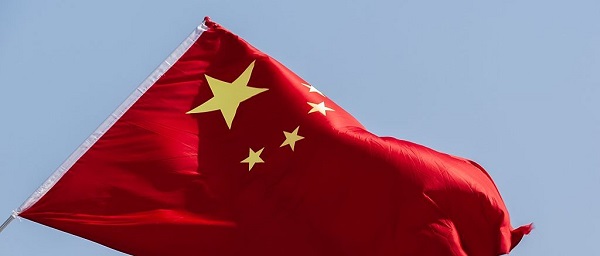
 Business1 day ago
Business1 day agoTrump Warns Beijing Of ‘Countermeasures’ As China Tightens Grip On Critical Resources
-

 International1 day ago
International1 day agoTrump gets an honourable mention: Nobel winner dedicates peace prize to Trump
-

 COVID-191 day ago
COVID-191 day agoTamara Lich says she has no ‘remorse,’ no reason to apologize for leading Freedom Convoy
-
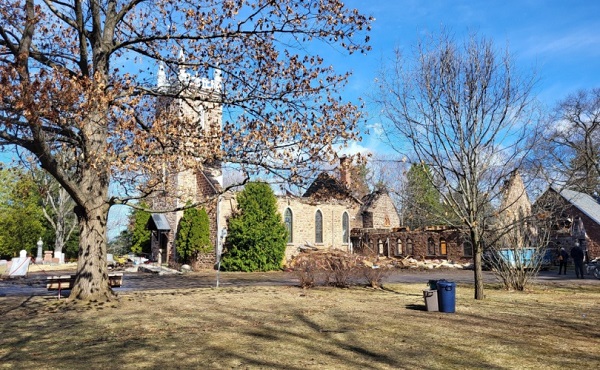
 Crime1 day ago
Crime1 day agoCanada’s safety minister says he has not met with any members of damaged or destroyed churches
-

 Business1 day ago
Business1 day agoTax filing announcement shows consultation was a sham
-

 Media2 hours ago
Media2 hours agoResponse to any budget sleight of hand will determine which audience media have decided to serve
-

 Education44 mins ago
Education44 mins agoClassroom Size Isn’t The Real Issue
